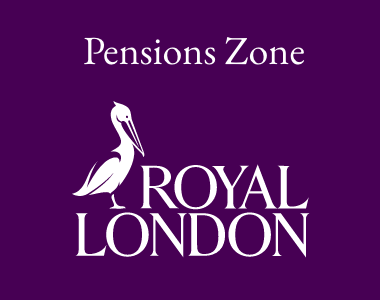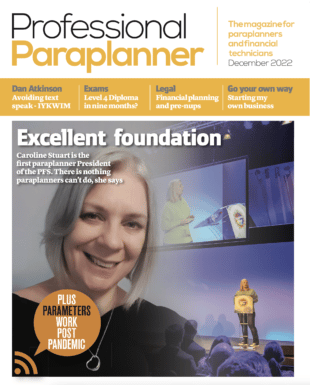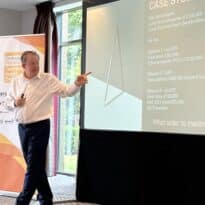Jessica Franks, head of Tax, Octopus Investments, shows how clients can achieve their estate planning objectives when a power of attorney is in place.
This article was first published in the October 2020 issue Professional Paraplanner.
Making an investment that qualifies for Business Property Relief (BPR) can be a good solution when there’s a power of attorney in place, especially where the donor has expressed wishes to plan for their estate. That’s because a BPR-qualifying investment stays in the donor’s name, meaning it is a way to undertake estate planning without giving wealth away.
As always, appropriate options depend on the donor’s circumstances and wishes. But as an investment led solution, BPR can present a way to plan for inheritance tax that it is easier to demonstrate is in the donor’s interests than lifetime gifting or settling assets into trust.
The following scenario, inspired by a case dealt with by an adviser we work with, illustrates how a BPR-qualifying investment can help clients achieve estate planning objectives when there’s a power of attorney in place.
Meet Barbara and Malcolm
Barbara and Malcolm are 88 and 90 respectively. Both have lost capacity, and a lasting power of attorney is in place for their financial affairs, with their grandson Tom acting as attorney. Tom wants to help Barbara and Malcolm stay in their home, where they receive at-home care. Although expensive, the cost of this care is being met by income from Barbara and Malcolm’s pensions. Tom is keen for them to have access to the remainder of their wealth should it be needed in the future to maintain their quality of care.
As well as wanting to help his grandparents continue to fulfil their wish to stay in their home, Tom is also mindful of inheritance tax, and the fact that Barbara and Malcolm expressed the desire to leave as much as they can to their great-grandchildren – Tom’s children, nieces and nephews.
Tom meets with Barbara and Malcolm’s adviser, Christine, to discuss what options are available. All told, the couple’s estate is worth £1.8 million, and Tom is keen to fulfil their wishes to reduce the inheritance tax liability.
Although Christine explains that Barbara and Malcom’s ongoing needs are expected to be met from their income, Tom is not keen to make gifts from their estate in case they need access to incremental funds in the future. While at-home care costs are currently covered, there’s uncertainty around how long they will need to be paid, and what other needs Barbara or Malcolm may have down the line.
That said, Christine also acknowledges that leaving as much wealth as possible to their great-grandchildren is another important objective the couple had.
Christine’s paraplanner Aidan researches investments that are expected to qualify for Business Property Relief (BPR) from inheritance tax. This, he explains, would take the form of a managed portfolio of shares that can be passed on free from inheritance tax, provided they have been held for at least two years when Barbara and Malcom die.
However, if Barbara and Malcolm needed to access that capital during their lifetimes, Tom could request to sell the shares. The shares would be in Barbara and Malcom’s names, in the same way that their existing investments already are.
Christine therefore suggests to Tom that some of the couple’s existing investments are moved into a BPR-qualifying investment.
There are risks involved
Christine explains to Tom that putting money into a BPR-qualifying investment would put Barbara and Malcolm’s capital at risk. The value of their investment, and any income from it, could fall or rise, and they may not get back the full amount they invest.
She adds that HMRC assesses BPR on a case-by-case basis when an estate makes a claim. The ability to claim the relief would depend on the company or companies Barbara and Malcolm invest in qualifying for BPR at the time the claim is made. Tax treatment would also depend on their personal circumstances, and tax rules could change in future.
Tom is also made aware that requests to withdraw might not be able to be met quickly as BPR-qualifying investments have to be made into unlisted or AIM-listed shares. The value of shares of unquoted companies and those quoted on the Alternative Investment Market can fall or rise by more than shares quoted on the main market of the London Stock Exchange. They may also be harder to sell.
Tom can see that, on balance, it may make sense for his grandparents to sell some of their existing share portfolio and put the proceeds into a BPR-qualifying investment. The investment would likely be higher risk and would trigger transaction fees and charges for going into a new product but it would stay in their name and could retain the potential to be used to keep them in their home for as long as possible, hopefully for the rest of their lives. At the same time, it would be a positive step towards Barbara and Malcolm’s estate planning objective.
Identifying opportunities – watch the tax planning special
On Thursday 5 November at 10am, the Octopus Online Show will be taking a more in-depth look at how you can spot clients that could benefit from additional ways to invest tax-efficiently.
The show is about helping you identify those clients where tax products should absolutely be on your radar.
You can find out more, and register to watch the show, at octopusinvestments.com/estate-planning-show-episode-5/
BPR-qualifying investments are not suitable for everyone. Any recommendation should be based on a holistic review of a client’s financial situation, objectives and needs. We do not offer investment or tax advice. Issued by Octopus Investments Limited, which is authorised and regulated by the Financial Conduct Authority. Registered office: 33 Holborn, London EC1N 2HT. Registered in England and Wales No.03942880. Issued: September 2020. CAM010190.




































